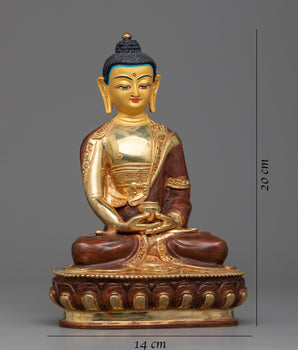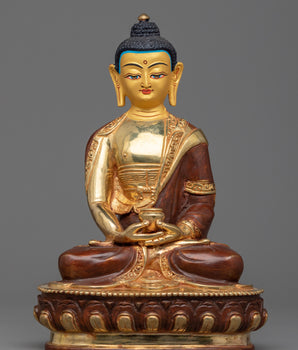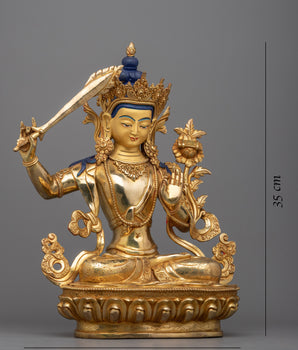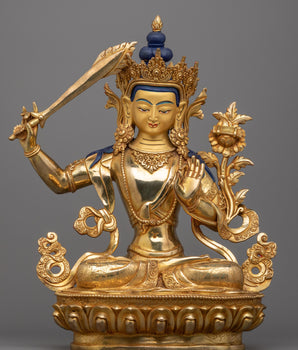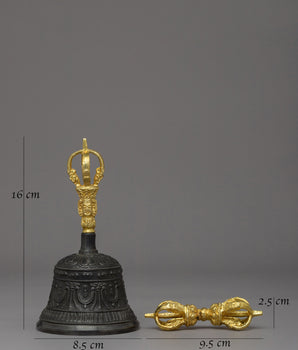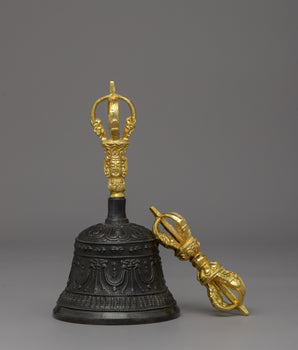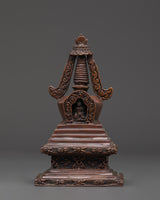
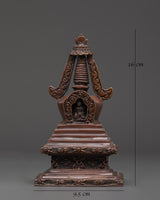
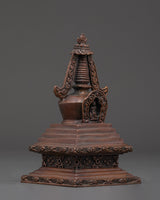
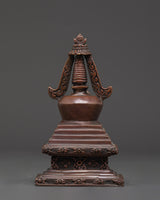
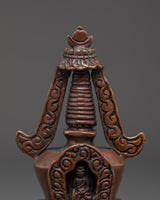

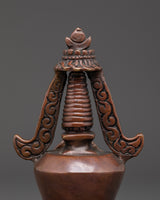
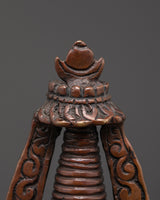
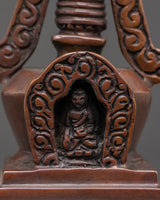
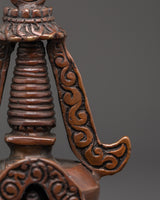
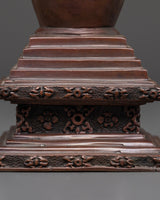
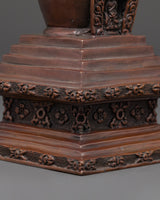
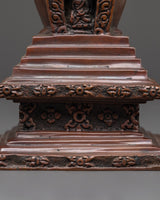
Traditional Oxidized Copper Tibetan Stupa | Perfect for Spiritual Decor
Traditional Oxidized Copper Tibetan Stupa | Zen Buddhist Altar Decoration
--------------------------------------------
Size: 16cm (Height) x 9.5cm (Width)
Weight: 0.90kg
Materials:
--------------------------------------------
About The Ritual Item :
Enhance your spiritual area with this Traditional Oxidized Copper Tibetan Stupa, a stunning, tiny depiction of sacred Buddhist architecture. This stupa, measuring 16cm tall and 9.5cm broad, is masterfully carved from oxidized copper, adding to its spiritual significance. Weighing 0.90kg, it is the ideal size for home altars, meditation areas, or as a focal point in your spiritual design, combining tradition and elegance in one beautiful piece.
Stupas are highly venerated symbols in Buddhism, reflecting the Buddha's enlightened mind and functioning as memorials of peace, harmony, and the path to enlightenment. This beautifully crafted stupa features a central chamber with a Buddha figure, reminiscent of the traditional practice of storing treasures and sacred writings. The tiered design and symbolic parasol provide blessings, protection, and spiritual merit to your house. The corroded copper body not only assures endurance but also exudes depth and reverence, making this relic appropriate for both everyday meditation and ceremonial use.
A stupa is more than simply a beautiful piece; it is a living emblem of spiritual elevation and inner transformation. In Buddhist culture, stupas are revered as sources of benefits, purifying negativity and inspiring compassion and knowledge. Placing this handcrafted stupa on your altar brings good energy, awareness, and the Buddha's blessings into your area, making it an ideal gift for practitioners, collectors, or anyone seeking peace and holy connection.
Introduction To Stupa :
Before Buddhism, great teachers were buried in mounds. Some were cremated, but sometimes they were buried in a seated, meditative position. The mound of earth covered them up. Thus, the domed shape of the stupa came to represent a person seated in meditation, much as the Buddha was when he achieved Enlightenment and knowledge of the Four Noble Truths. The base of the stupa represents his crossed legs as he sat in a meditative pose. The middle portion is the Buddha’s body, and the top of the mound, where a pole rises from the apex surrounded by a small fence, represents his head. Before images of the human Buddha were created, reliefs often depicted practitioners demonstrating devotion to a stupa.
How to Set Up Your Buddhist Shrine?
Find a clean, quiet, and uncluttered spot.
Please set up an altar table and cover it with an altar cloth that calls to you.
Place your sacred item (statue, thangka, or a picture of Buddha) at the center.

















